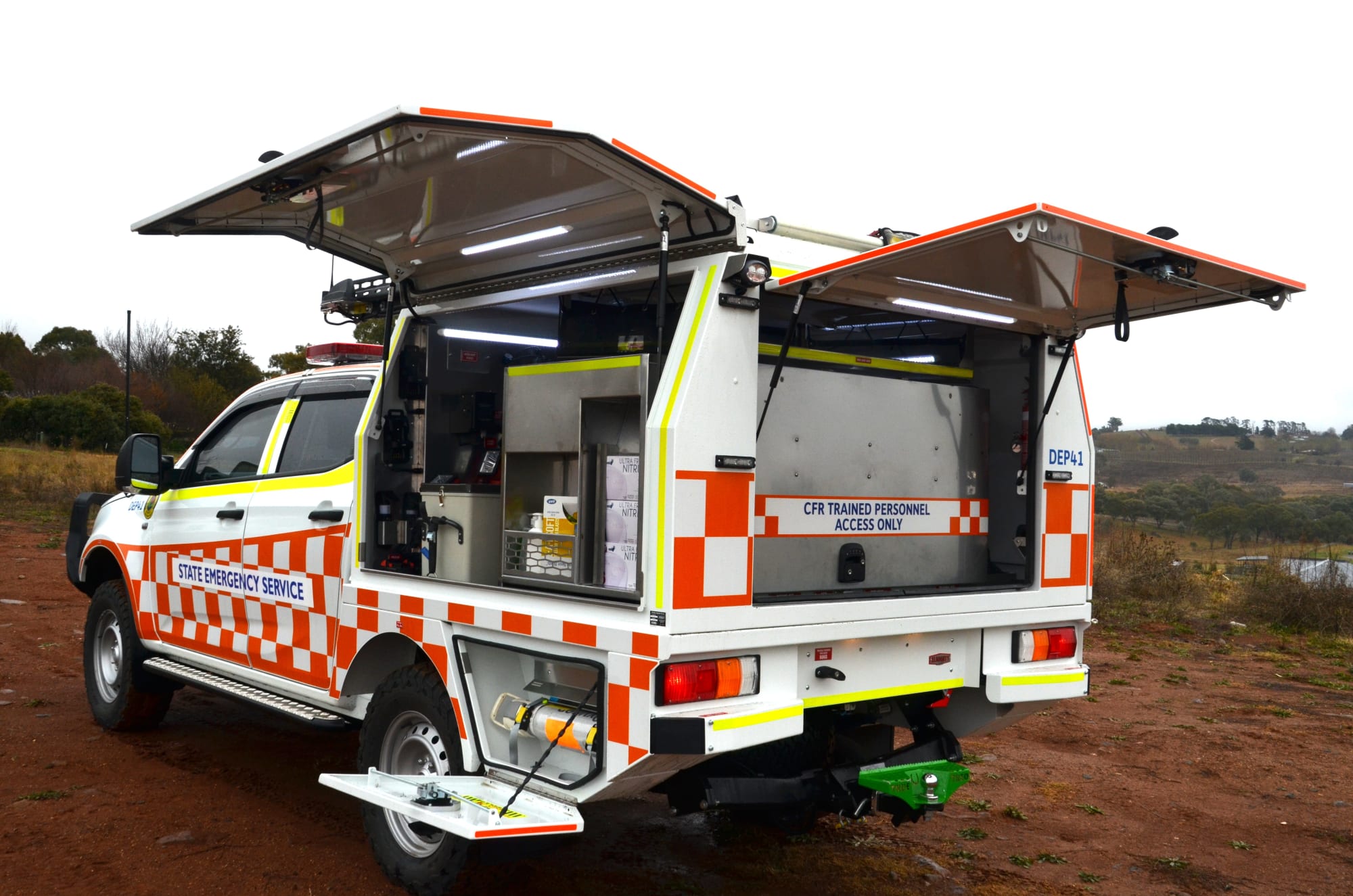Invest
Inflation dynamics in Australia: Electricity subsidies and labour market in focus
Invest
Inflation dynamics in Australia: Electricity subsidies and labour market in focus
In a recent economic analysis, experts from State Street have highlighted significant developments in Australia's inflation landscape, attributing the changes primarily to the withdrawal of electricity subsidies in certain regions. This policy shift has led to an increase in household expenses, pushing the headline inflation rate to 3% year-over-year in August. However, the underlying inflation pressures appear to remain stable, according to key economic indicators.
Inflation dynamics in Australia: Electricity subsidies and labour market in focus
In a recent economic analysis, experts from State Street have highlighted significant developments in Australia's inflation landscape, attributing the changes primarily to the withdrawal of electricity subsidies in certain regions. This policy shift has led to an increase in household expenses, pushing the headline inflation rate to 3% year-over-year in August. However, the underlying inflation pressures appear to remain stable, according to key economic indicators.

Krishna Bhimavarapu, the APAC Economist at State Street Investment Management, noted, "Electricity subsidy withdrawals in select regions led to a notable uptick in household expenses, driving headline inflation to 3% year-over-year in August." Despite this increase, Bhimavarapu emphasised that the trimmed mean Consumer Price Index (CPI), a more accurate gauge of core inflation, continued to decline, reaching 2.6%. This suggests that the fundamental price pressures are still under control. "We maintain our view that inflation will stay within the RBA’s target range over the coming year," Bhimavarapu added. However, he also cautioned that the labour market requires vigilant monitoring as its momentum appears to be waning.
Adding to this perspective, Dwyfor Evans, Head of APAC Macro Strategy at State Street Markets, observed that the August inflation figures were slightly above expectations. "Australia August inflation came in a touch higher than expected at 3%yoy, but the widely watched Trimmed Mean indicator was weaker at 2.6%yoy from 2.7%," Evans explained. He also pointed out that while the PriceStats Australia series for August showed a relatively modest increase of 6 basis points, it does not fully capture the robust online price growth that has kept the annual rate above the target.
The implications of these inflation dynamics are significant for the Reserve Bank of Australia (RBA) as it considers its monetary policy stance. Evans remarked, "The upshot is that the Reserve Bank will remain reluctant to signal an overly accommodative stance with markets centred on an unchanged cash rate at the September 30 meeting." This cautious approach is likely to support the Australian dollar, especially against other G10 currencies where central banks are continuing to ease policy rates.
The withdrawal of electricity subsidies, a key factor in the inflation uptick, is part of broader economic adjustments that households are currently navigating. These changes have prompted debates about the balance between necessary fiscal reforms and the immediate financial impact on consumers. The increase in household expenses due to higher electricity costs underscores the delicate interplay between government policy and economic stability.

As the RBA prepares for its upcoming meeting, the central bank is expected to weigh these inflationary pressures against the backdrop of a softening labour market. The RBA's decision on whether to adjust the cash rate will be closely watched by markets, given its potential impact on currency valuation and economic growth.
The labour market's slowing momentum, as highlighted by Bhimavarapu, is another critical factor that could influence the RBA's policy decisions. A weakening labour market may lead to subdued wage growth, which could, in turn, affect consumer spending and overall economic activity. This complex economic environment requires careful navigation to ensure that inflation remains within the target range while supporting economic growth.
In summary, the recent developments in Australia's inflation and economic landscape present a multifaceted challenge for policymakers. The interplay between subsidy withdrawals, inflation rates, and labour market dynamics will be crucial in shaping the RBA's approach in the coming months. As experts like Bhimavarapu and Evans continue to analyse these trends, their insights will be invaluable in understanding the broader economic implications for Australia.

Economy
Global deal activity declines by 6% amid economic uncertainty, reports GlobalData
In a year characterised by economic turbulence and evolving market conditions, global deal activity has witnessed a notable downturn during the first ten months of 2025. According to GlobalData, a ...Read more

Economy
Australia’s softening labour market puts another RBA cut in play — here’s what business should do now
A four-year high in unemployment has revived expectations the Reserve Bank could deliver another rate cut as soon as November. With quarterly GDP growth running at 0.6 per cent and annual growth at ...Read more

Economy
Rising CPI reinforces RBA’s stance as rate cut expectations remain: State Street
State Street Global Advisors says the Reserve Bank of Australia (RBA) is likely to hold its current policy outlook following the release of September quarter inflation data, which showed an unexpected ...Read more

Economy
NSW SES boosts tsunami preparedness ahead of World Tsunami Awareness Day
As World Tsunami Awareness Day approaches on 5 November, the New South Wales State Emergency Service (NSW SES) is ramping up efforts to enhance tsunami preparedness along the east coastRead more

Economy
Lifesaving Regional Response Strengthened with New NSW SES Vehicles
In a significant boost to regional emergency services, the NSW State Emergency Service (SES) has unveiled 11 new Community First Response (CFR) vehicles, designed to enhance the speed and safety of ...Read more

Economy
Australia's June quarter GDP growth driven by consumer and government spending
Australia's economy has shown unexpected resilience in the June 2025 quarter, with household and government consumption driving growth despite a significant decline in public investmentRead more

Economy
Australia's GDP surprise is real but operators should heed the growth mix warning light
Australia’s June-quarter growth beat expectations on the strength of household consumption and government spending, even as public investment sagged. The upside surprise signals resilience, but the ...Read more

Economy
Households carried the quarter: what Australia’s upside GDP surprise means for strategy now
Australia’s economy expanded faster than expected in the June 2025 quarter, with GDP up 0.6 per cent quarter-on-quarter and 1.8 per cent year-on-year — the strongest pace in two years. The kicker ...Read more

Economy
Global deal activity declines by 6% amid economic uncertainty, reports GlobalData
In a year characterised by economic turbulence and evolving market conditions, global deal activity has witnessed a notable downturn during the first ten months of 2025. According to GlobalData, a ...Read more

Economy
Australia’s softening labour market puts another RBA cut in play — here’s what business should do now
A four-year high in unemployment has revived expectations the Reserve Bank could deliver another rate cut as soon as November. With quarterly GDP growth running at 0.6 per cent and annual growth at ...Read more

Economy
Rising CPI reinforces RBA’s stance as rate cut expectations remain: State Street
State Street Global Advisors says the Reserve Bank of Australia (RBA) is likely to hold its current policy outlook following the release of September quarter inflation data, which showed an unexpected ...Read more

Economy
NSW SES boosts tsunami preparedness ahead of World Tsunami Awareness Day
As World Tsunami Awareness Day approaches on 5 November, the New South Wales State Emergency Service (NSW SES) is ramping up efforts to enhance tsunami preparedness along the east coastRead more

Economy
Lifesaving Regional Response Strengthened with New NSW SES Vehicles
In a significant boost to regional emergency services, the NSW State Emergency Service (SES) has unveiled 11 new Community First Response (CFR) vehicles, designed to enhance the speed and safety of ...Read more

Economy
Australia's June quarter GDP growth driven by consumer and government spending
Australia's economy has shown unexpected resilience in the June 2025 quarter, with household and government consumption driving growth despite a significant decline in public investmentRead more

Economy
Australia's GDP surprise is real but operators should heed the growth mix warning light
Australia’s June-quarter growth beat expectations on the strength of household consumption and government spending, even as public investment sagged. The upside surprise signals resilience, but the ...Read more

Economy
Households carried the quarter: what Australia’s upside GDP surprise means for strategy now
Australia’s economy expanded faster than expected in the June 2025 quarter, with GDP up 0.6 per cent quarter-on-quarter and 1.8 per cent year-on-year — the strongest pace in two years. The kicker ...Read more








